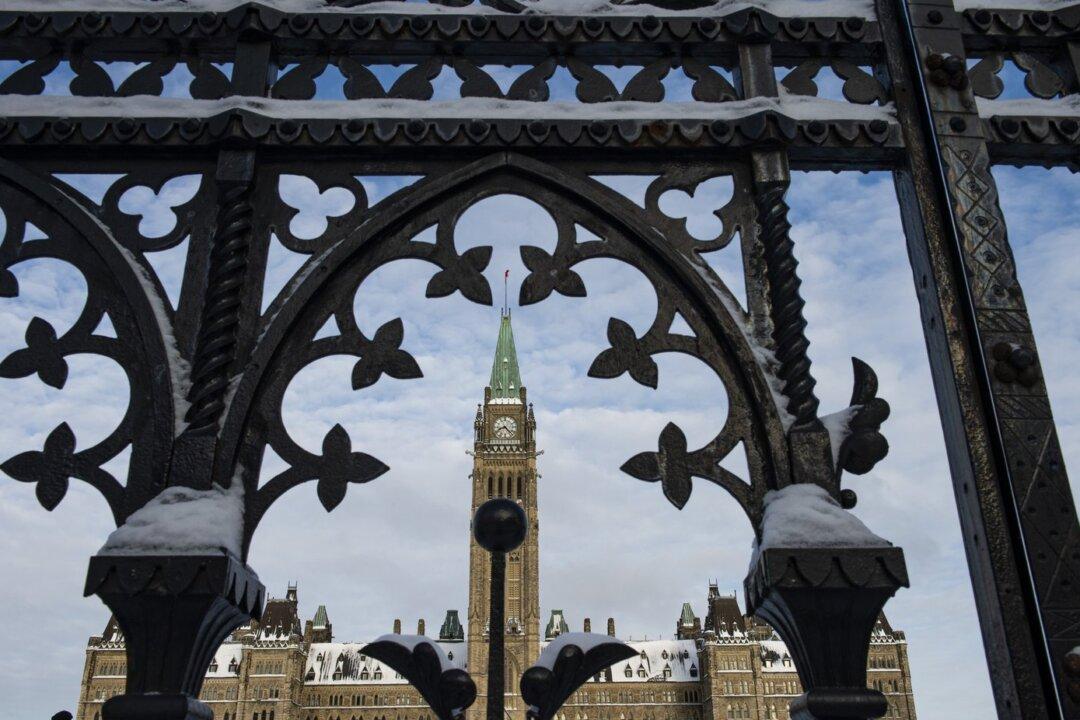Ottawa will present its fall economic statement (FES) on Nov. 21 amid a backdrop of weakening growth, higher interest rates, elevated inflation, and ongoing wars in Ukraine and Gaza. Given the current government’s history of running deficits, analysts urge spending restraint and are skeptical about the government’s ongoing expense review exercise.
The FES typically provides a progress update since the last federal budget and also offers commentary on the economy. Serving as a mini-budget, it usually includes some new program spending as well, though major announcements are reserved for the annual budget.
“Common sense would say there has to be some restraint,” said Philip Cross, former chief economic analyst at Statistics Canada and senior fellow at the Macdonald-Laurier Institute, in a Nov. 14 interview.
He says the biggest short-term problem for Canadians is inflation and that the government can do its part to rein in inflation by stopping spending.
According to Carleton University business professor Ian Lee, who spoke with The Epoch Times on Nov. 13, “this government has not shown a deep concern over deficits.”
Budget 2023, presented in March, forecasted a deficit of $40.1 billion by March 2024 with a projected improvement to $14 billion by March 2028. The FES presented in November 2022 projected a $4.5 billion surplus by March 2028.
In its economic and fiscal outlook published Oct. 13, the Parliamentary Budget Officer projected the deficit to hit $46.5 billion by March 2024.
Mr. Lee says the government should be “sterilizing the deficits”—meaning that it should match every new spending commitment with a spending reduction elsewhere.
Canada’s economic situation has declined since the end of 2022 and the start of 2023, when it was still growing reasonably.
The average quarterly GDP (gross domestic product) growth annualized from the third quarter of 2022 to the first quarter of 2023 was 1.6 percent.
But now, the economy is flirting with a technical recession of two quarters of negative growth. For example, RBC’s forecast for 2023’s third and fourth quarters is -0.5 percent.
Lower growth means less tax revenue for the government.
In late March, the yield on Canada’s 10-year bond was around 2.75 percent. It is now about a full percentage point higher, which increases the government’s interest expense more than what was forecast in Budget 2023.
Political pressures are also weighing on the government, as it has been taken to task for exacerbating the housing affordability crisis and fuelling inflation with deficit spending.
“The housing crisis in this country—it’s going to take a long time to fix but they want to be perceived as trying to fix something. They might throw a few dollars at that,” Mr. Cross said regarding what to look for in the FES.
Ottawa announced on Nov. 14 the provision of $1.2 billion in fully repayable low-interest loans to build 2,644 rental homes in Toronto. This isn’t new spending, as it was already accounted for in the fiscal framework.
Spending Review
Budget 2023 announced the goal of “refocusing” $15.4 billion in expenses over the next five fiscal years (2023–24 to 2027–28) followed by $4.5 billion annually thereafter. But the exercise does not have an explicit goal of reducing deficits.
In an Oct. 17 letter to Finance Minister Chrystia Freeland, Business Council of Canada president and CEO Goldy Hyder raised the concern that the refocusing “is actually a minor reallocation exercise with no real savings to the fiscal framework.”
Mr. Hyder told Ms. Freeland that funding programs with more borrowing is “ill-advised”and will only make public finances more vulnerable.
Mr. Cross said he’s cynical about the spending review given where cuts tend to happen.
“The only thing that they ever seem to take action on is trying to cut some areas of defence spending. With the geopolitics of the world, this would be about the worst possible time to cut defence spending,” he said.
The feds said refocusing targets have been identified for 80 organizations across the government, but that certain spending—like on the Canadian Armed Forces—is excluded from the exercise.
Mr. Lee says the government should instead be doing a much more rigorous program review to identify which programs are not meeting their goals. Ottawa’s current effort will not generate the spending cuts needed to fund the government’s wish list, he added.





